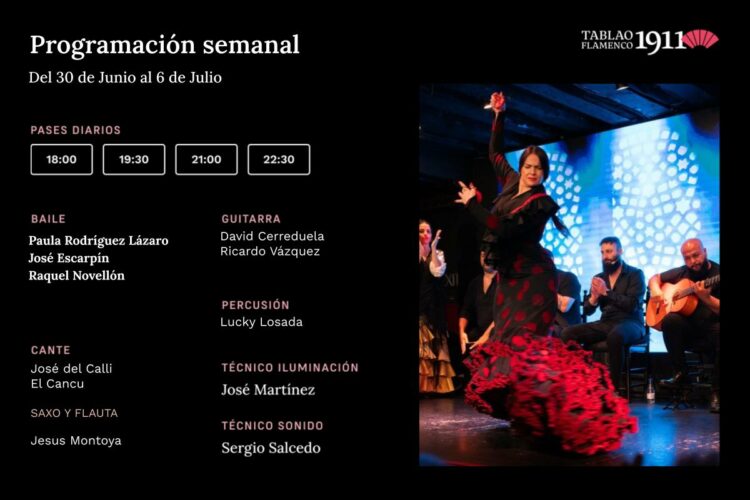
Flamenco Madrid Daily Show
A week of great names and pure flamenco soul on the stage of Tablao Flamenco 1911.
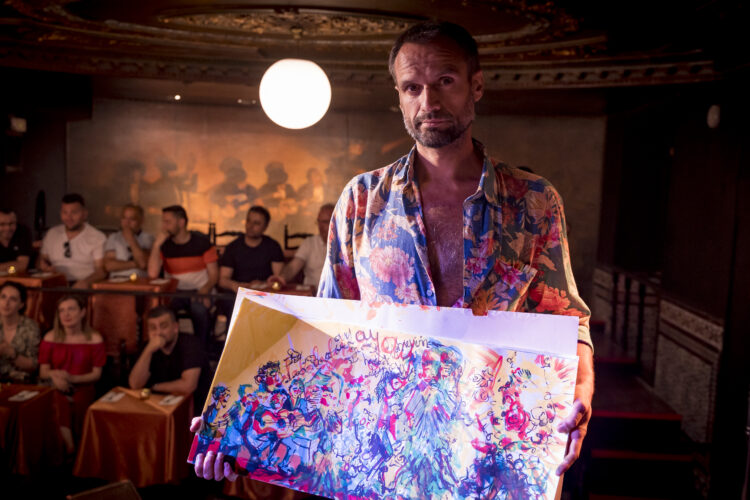
We are with Iván Lucas, appreciating his representation of the flamenco scene in a work of art. The man from Toledo, who spent 9 years living in different parts of Asia, tells us how he discovered flamenco and his connection with the art.
The other day I was watching Rocío Molina, who fascinates me, talking about inspiration, I was sitting in the armchair and it was hard for me not to start dancing. For me the process of painting is to empty myself first.
To prepare myself for a painting I don’t warm up my fingers, I sit down to meditate, it’s a process of emptying, of emptying myself, then opening up and filling myself. So for me it’s not an effort, I can’t help but be inspired by everything around me, in general. But in particular the intensity, the passion and the diversity of expression of flamenco, that’s what I can’t help but be inspired by.
I spent the last three years living in the jungle, in India and then 9 years in different parts of Asia. It was there that I discovered flamenco. I had a yoga studio where I painted, and there came one of the organizers of the Cante de las Minas festival. They brought the festival, for an anniversary, and they brought Spanish artists along with gypsy artists from India. In that context, they invited me to paint, and that was a gift that transformed my life.
Flamenco had always been the music of people who suffer a lot and I had no interest in it, but when I was able to witness that incredible and inspiring show, I discovered that communication between the guitar, the dance, the music and the clapping. Right there I started to feel that communication in my hand, I felt part of the flamenco cuadro but painter.This had been the same in 2013, where I had my first contact with flamenco and a dream, to be part of a flamenco cuadro as a painter.
Five years later I wrote and co-directed my flamenco show where I did the live visuals, that connection that I had felt so deep before, I could still feel it alive.
.
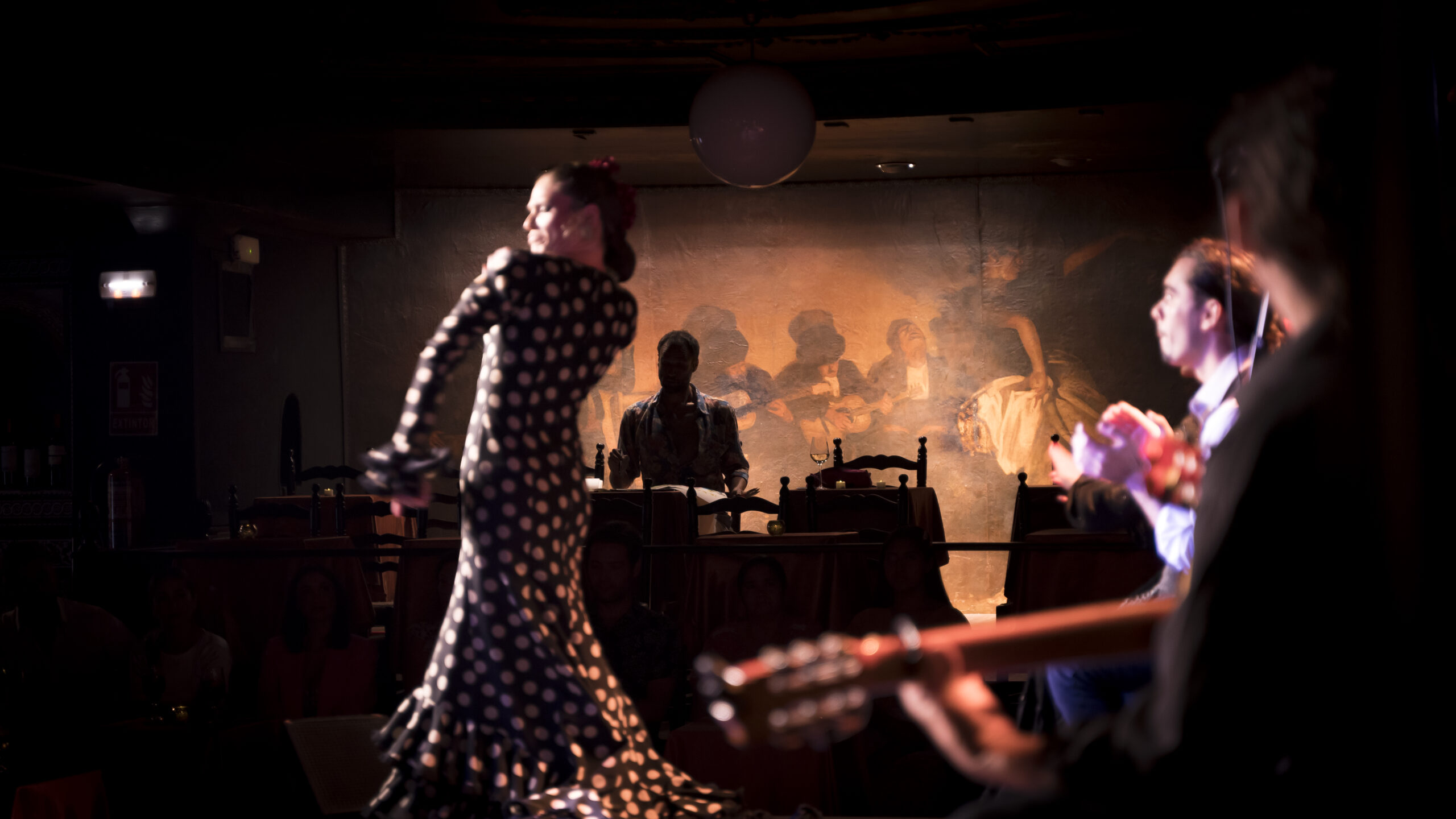
It was a bit hard to come back to the city after the Covid. I was looking for a way to run away, but there was a moment in which I lived a transformation and I asked myself: What is there here that there is nowhere else, and it was there where I reconnected with flamenco. From there to this collection of flamenco paintings that I am doing.
There is a movie that I love: Latcho Drom: Que tengáis un buen viaje – La terapia del arte (Documentary film by the Algerian Tony Gatlif). It is a documentary in which there is no story, no words, just music and dance. It starts in Rajasthan, then through the Middle East, passing through Southern Europe and North Africa to end in Badajoz.
You can see the smooth evolution, how he tells it without noticing a jump, a very nice trip. When I returned to Spain, I landed in Badajoz, where the film ends, and it was there that I had my first collaboration with a flamenco show. I discovered that the scene I loved so much was from there and it was like being incarnated in the film.
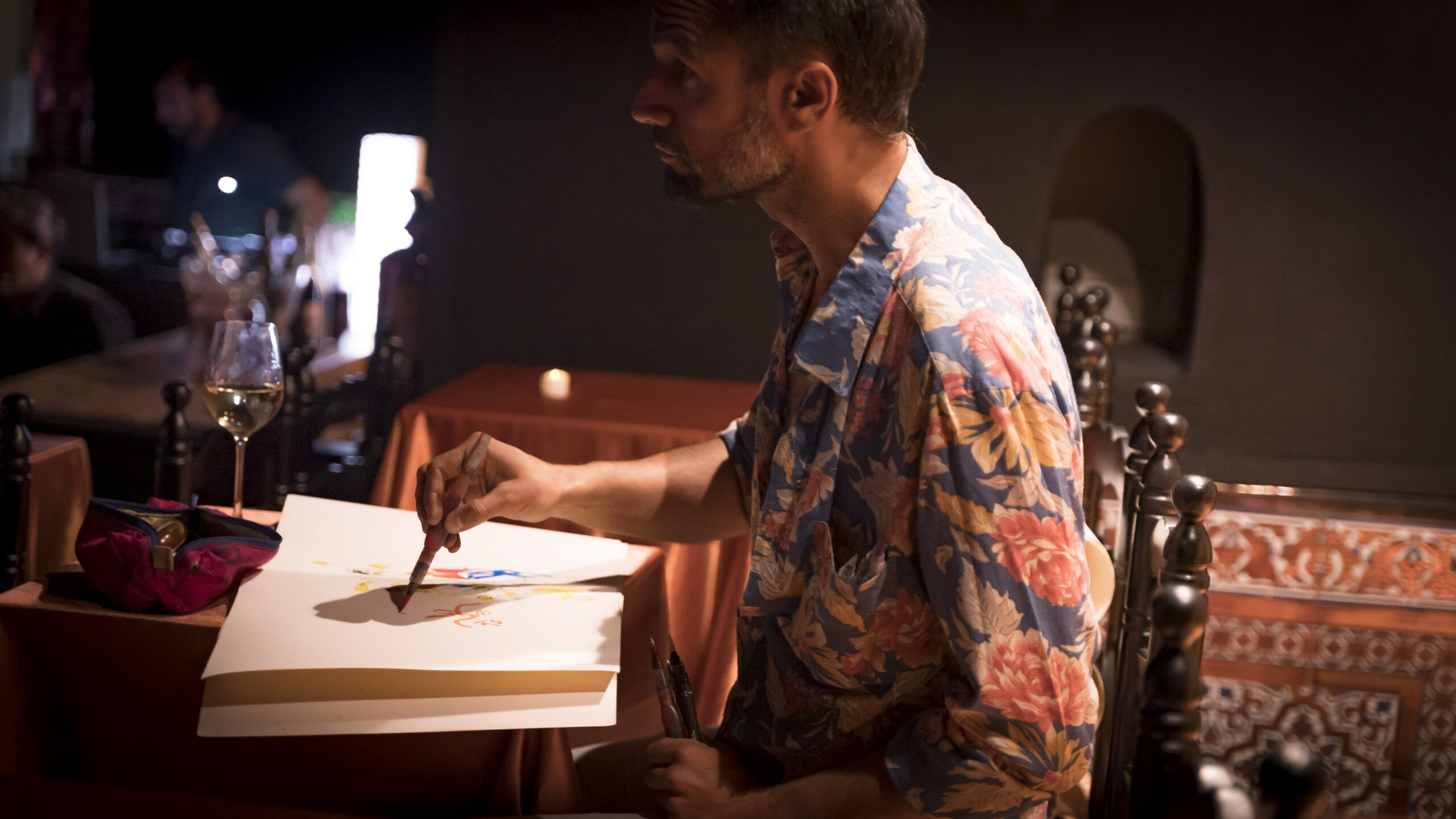
In those lands, there is a lot of intensity, the smells, the colors, the flavors, the sounds, the people. Here what I feel in contrast is that in the West, we have this false illusion that we have everything under control, with our health insurance, with our concrete and steel constructions, with a planning, ideas, a false illusion that we have everything under control. But there they are aware that no, there every day is an adventure. And I think that is what invites them to really appreciate every moment.
Particularly after Covid, there were times when there were waves of people dying in the neighborhood and the next week life went on. There wasn’t a kind of getting stuck in that, life goes on.
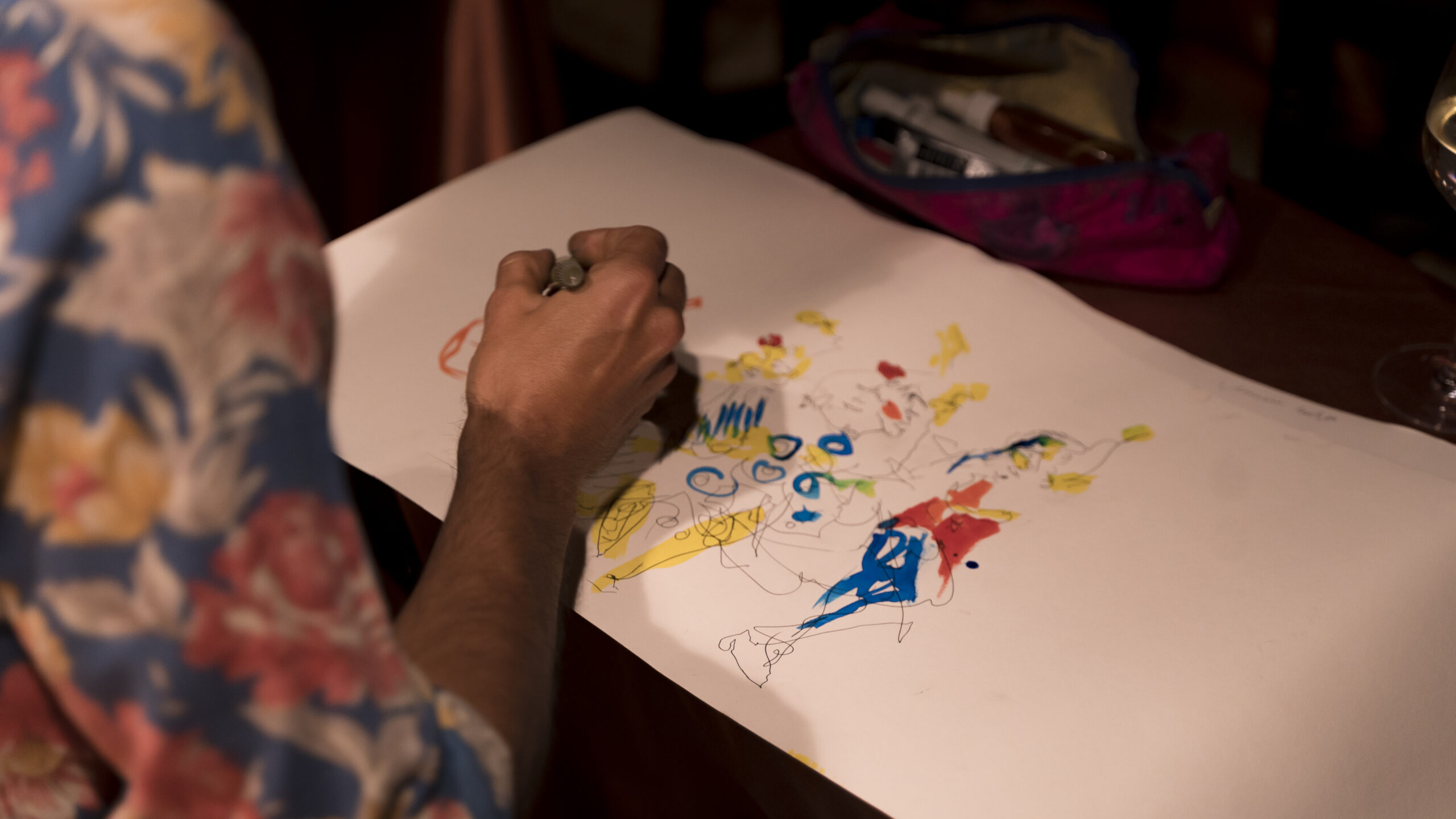
I came to visit when it was empty and was very curious to feel the energy when it was in action. It has been very nice to see that contrast of arriving, seeing people coming in and seeing it buzzing as an inspiring frame. The color palette that they have here is very much in line with what I have, that palette of primary and secondary colors, intense, very nice to be able to see that.
Therefore, I do the same thing, whatever I feel like doing. I think that one of the things that characterizes what I do is that I do not only paint what I see, I love to review all the artists in history who have been documenting and polishing flamenco.
For me, transmitting what I feel through all my senses is like dancing with colors. Painting is my main discipline, there are many moments when I don’t even look at the canvas, when I feel what is happening and transfer it that way.